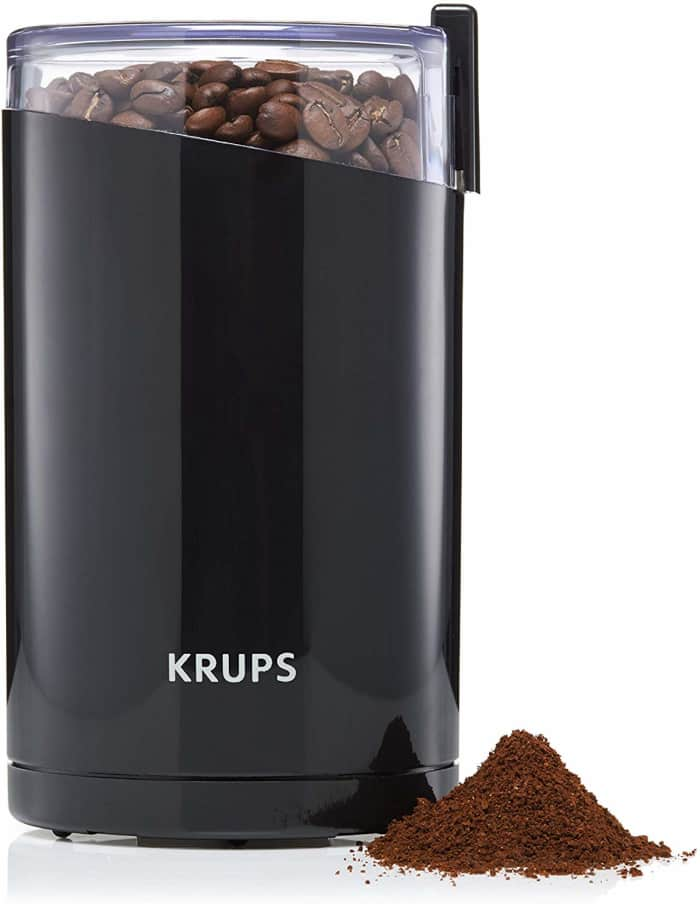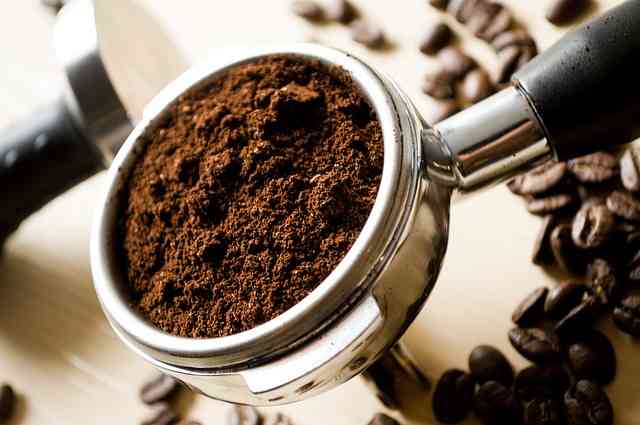The 3 Best Affordable Coffee Grinders
Paul's passion for making and consuming coffee extends back over thirty years. An extensive traveler, he currently lives in Florida.

Looking for a reliable and effective but inexpensive coffee grinder? Read below for my three suggestions.
Self
As a huge coffee enthusiast for over thirty years, I can't emphasize enough the importance of grinders in the brewing process. Grinding your beans immediately before you brew will provide your beverages with the maximum amount of flavor and fragrance.
These choices are based on my own experiences and the numerous machines that I've either owned or used enough to be very familiar with their pros and cons. All three of these grinders are priced at around the twenty dollar price mark or lower, and they all offer excellent value.
Top 3 Inexpensive Coffee Grinders
Here, in no particular order, are my three recommendations for those seeking an affordable grinder.
- Krups F203: Follows a tried and tested design and is a robust and very affordable blade grinder.
- JavaPresse: My favorite low-priced manually-operated mill. It's portable and quiet.
- Hamilton Beach: Another very practical one-touch electric that's inexpensive to buy.
I explain my suggestions and give my experiences of each of them below.

The Krups F203. Grinding your own coffee is the best way to obtain a brew with a full flavor, you should never buy ready ground coffee unless you have to. Grinding right before you brew is generally the best way to make a full flavor beverage.
1. The Krups F203: A Tried and Tested Classic Design
I've used one of these machines every day in my workplace for a number of years and I can highly recommend it. In my opinion, the Krups F203 will meet most people's basic needs regarding freshly ground coffee.
Krups F203 Pros
- It's true that there are better grinders out there, but they will cost you substantially more money (mid-quality electric burr grinders start at around $90 - $100). The Krups has a classic design, it can be bought for well under twenty dollars and offers excellent value.
- As well as coffee, I've also used mine to grind spices, nuts and grains. I have the black version, but it is also available in white, red, and cappuccino colors.
- I've had my machine for over eight years and have seen no deterioration regarding its ability to grind. It's robust and small enough to stash away when not in use. Its compact design means that I can just keep it in a corner of the counter, as it takes up so little surface space.
Krups F203 Cons
- The size of the grounds depends on how long you run it for, which does take a little getting used to—there are no settings that you can select.
- The only other negative is the noise. It's loud enough to wake a light sleeper in the next room. That said, blade grinders are never quiet in my experience. (Tip: You can muffle the sound that the grinder produces by placing it on top of a towel when you grind!). If you require a machine that doesn't make a noise, your options are limited, you may want to consider a manual grinder, which you operate using a hand crank (see the JavaPresse below).

I just love the sleek design of the JavaPresse. As it is hand-cranked and there is no motor, you can take it anywhere: traveling, camping, on the road. Unlike the Krups it has settings to help you get the precise size of grind that you require.
2. The JavaPresse: Sleek, Portable, and Inexpensive
The best budget coffee grinders don't have to be electrically powered! The JavaPresse manual grinder has such a lovely, sleek design, it's great to look at and hold, as well as use.
JavaPresse Pros
- Hand-cranked mills have two big advantages over electric machines. First of all, they are usually portable and usable anywhere, I take mine camping and on road trips. Secondly, they are very quiet, you don't wake up other people when you make your morning brew.
- There are 18 settings for grinding, making it easy to be precise. If you are an experienced grinder like me, you know that different coffee makers require different sized grounds, so settings are a really great help.
- Overall, the JavaPresse is straightforward to use, simple to clean, and compact enough to store away without fuss when not in use.
JavaPresse Cons
- The only downside is that being a manual, it does take a degree of time and effort to grind your coffee. You can't just press a button or flip a switch like with an electric.

The Hamilton Beach Fresh Grind 4.5oz Electric Coffee Grinder is another well designed model that I would recommend.
3. The Hamilton Beach Fresh Grind 4.5oz: Affordable and Quiet
I never thought that I would ever find a budget grinder to rival my Krups, but then a friend introduced me to the Hamilton Beach Fresh Grind 4.5oz. It's a compact machine with a striking and practical design and I love it.
Hamilton Beach Pros
- This machine works in a similar way to the Krups in that there's a push-button that you keep pressed until your beans have been reduced to the size of grounds you want.
- The transparent grinding chamber allows you to see the spinning blades and the grounds. The chamber is also removable for easy use and cleaning.
- Perhaps one of the Hamilton Beach's biggest selling points for me is that it's definitely quieter than most of the inexpensive grinders that I've used. That means that there's less chance of waking another member of the household if you rise early.
Hamilton Beach Cons
- The main downside is that as with all the blade grinders of this type, you judge the coarseness of the grounds by sight, there are no settings to determine it for you. You basically have to get used to holding the button for the appropriate amount of time. That may put some people off, but to be honest, it's not rocket science.
What Are the Benefits of Grinding Your Own Coffee?
Grinding your own coffee beans, rather than buying them ready ground, is simply the best way of ensuring a fresh, fragrant, and tasty brew.
I started grinding over 25 years ago and I've never looked back. For sure, to some extent you get what you pay for when purchasing a grinder, and the best machines tend to start at around the $90 to $100 mark—but a $20 grinder will still do the job and give you way better-tasting coffee than buying ready ground.
There are some very stylish, efficient, and affordable products on the market nowadays, both electrically powered and hand-cranked, which will meet most people's basic needs and give excellent value for money.
We want to do a lot of stuff; we're not in great shape. We didn't get a good night's sleep. We're a little depressed. Coffee solves all these problems in one delightful little cup.
— Jerry Seinfeld
3 Types of Coffee Grinders
There are three main types of grinder: blade, burr, and manual.
- Blade grinders are very often the cheapest type of powered machine that you will find. They may not be the quietest, or the most accurate, but they get the job done and usually won't cost you too much. I would favor them for use in a small kitchen where space is a premium, or for use as an office grinder. They work via a spinning, propeller-like blade cutting up the beans into smaller and smaller pieces. The longer the blade spins, the smaller the grounds will be.
- (Electric) burr grinders are generally quieter than blades, more accurate and less messy, but they usually cost more. They work by crushing the beans. There is usually a choice of settings, enabling you to select the precise coarseness or fineness that you require for your coffee maker. They are widely viewed as the best type of grinder.
- Manual grinders are generally operated with a crank and the beans are crushed by rotating burrs. Because they are not motorized, they are very quiet, and don't require a power supply so are great for taking traveling, or camping. The size of the grounds produced is dictated by how long you turn the crank for: the more you turn, the finer the grounds.

The ideal size of the grounds for brewing depends upon the type of coffee maker that you are using. A French press for instance requires coarse grounds, for instance, whereas espresso machines generally require the grounds to be very fine.
A Brief History of Coffee
According to legend, coffee was first discovered by an Ethiopian goat herder, who noticed that his animals became more lively after eating berries from a certain plant. At first the berries were chewed, but then people realized that they could be used to make a drink. In the 15th century Arabs in Yemen began cultivating the plant. By the 16th century coffee was being drunk in Iran and Turkey before spreading to Western Europe via Italy. The first American coffee house began business in 1689.

Palestinian women grinding coffee in 1905. It was the Arabs who first cultivated coffee and made it into the product we recognize today. The Arabs controlled the world coffee market, until European colonialists got hold of the plant.
This content reflects the personal opinions of the author. It is accurate and true to the best of the author’s knowledge and should not be substituted for impartial fact or advice in legal, political, or personal matters.
© 2011 Paul Goodman
Comments
Malcolm Harrell on July 04, 2020:
How are guys doing,I hope you all are doing just fine.
Carbonated Coffee on January 09, 2017:
Thanks, possibly can save some $$$ using this.
Ramen Boy on July 25, 2014:
Also, what about the Hario burr grinders like the Hario Slim Mill?
Ramen Boy on July 25, 2014:
@PaulGoodman67 - Kyocera vs Mr. Coffee BVMC-BMH23???
Paul Goodman from Florida USA on June 26, 2012:
After reading this, I've decided to go for the Krups. I need a basic grinder for my work office.
femmeflashpoint on September 24, 2011:
My family had an old one, wooden with an iron grinder on the top and a little drawer to catch the grounds towards the bottom. No idea where it is now. I saw one a few years ago in a shop, a new one made to look old, lol. Wish I'd picked it up because I haven't seen any like it since.
Paul Goodman (author) from Florida USA on September 24, 2011:
@femmeflashpoint - the Kyocera is a very nice grinder if you like manuals. The design is great and cleaning it is easy!
femmeflashpoint on September 24, 2011:
Paul - very good information here for coffee lovers and wanna-be-bean-grinders. :)
I'm preferring the Kyocera Ceramic. It's more pricey but less messy. The grinders that don't dump the processed coffee to the bottom leave me with a mess that I have to clean up.















